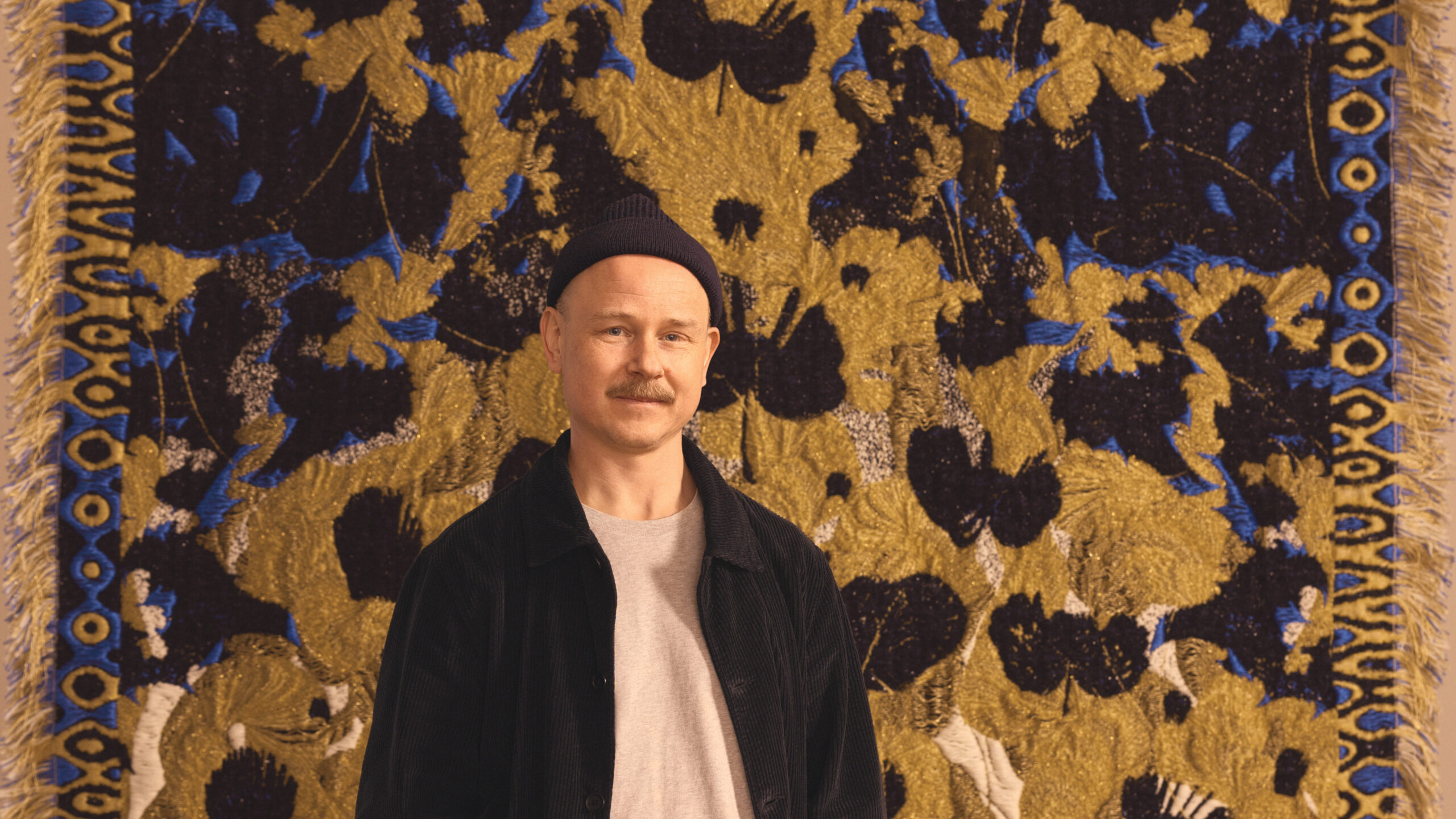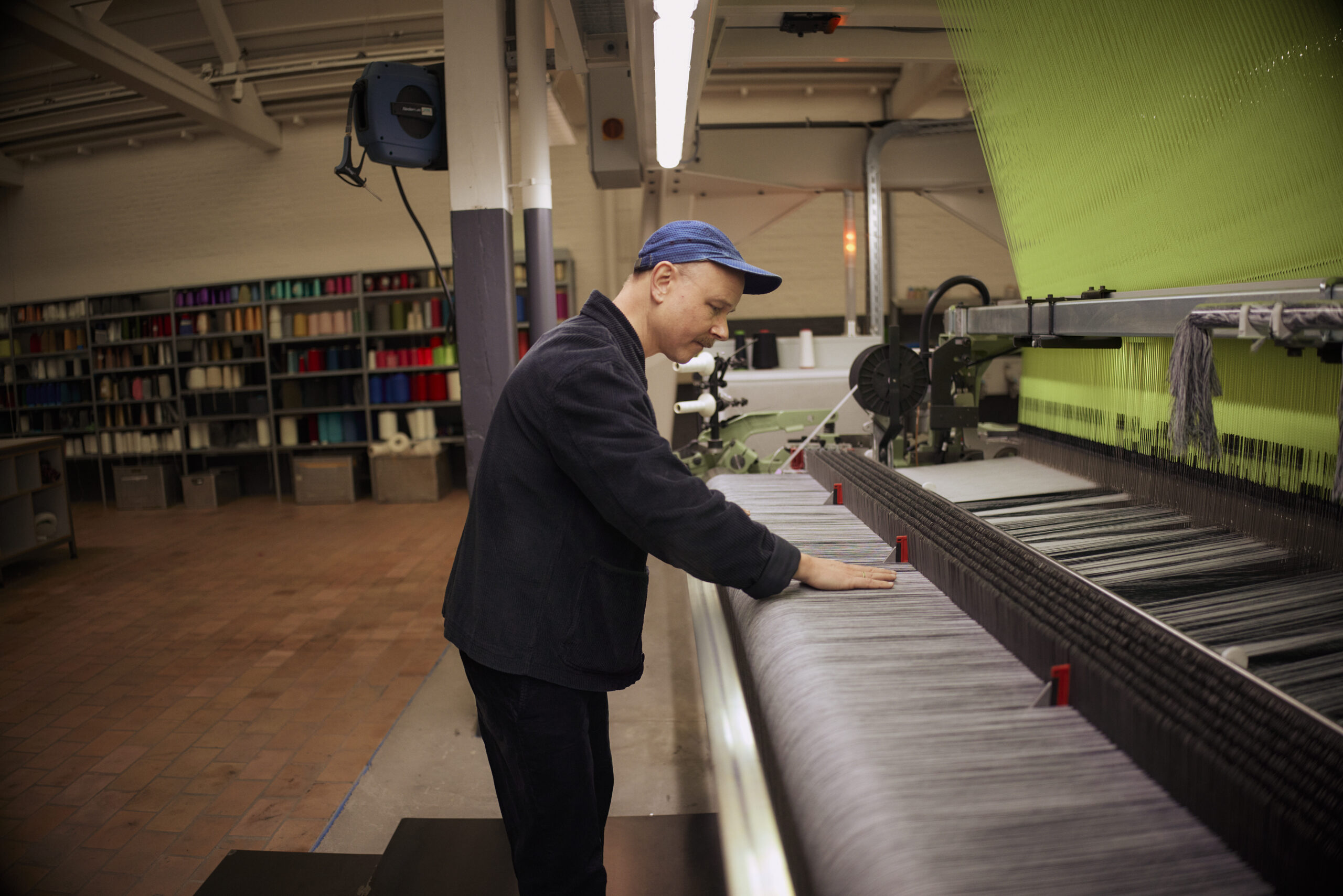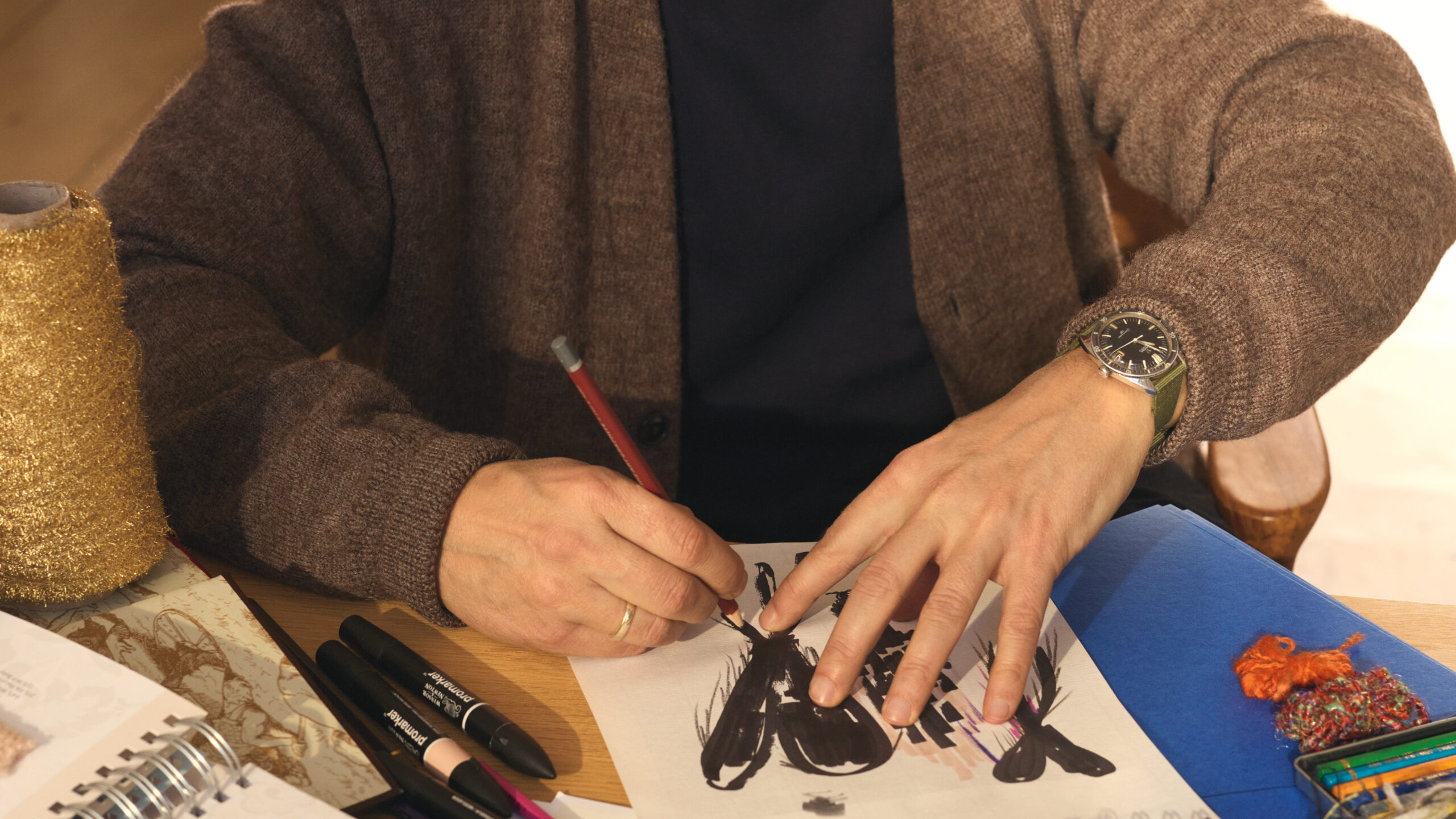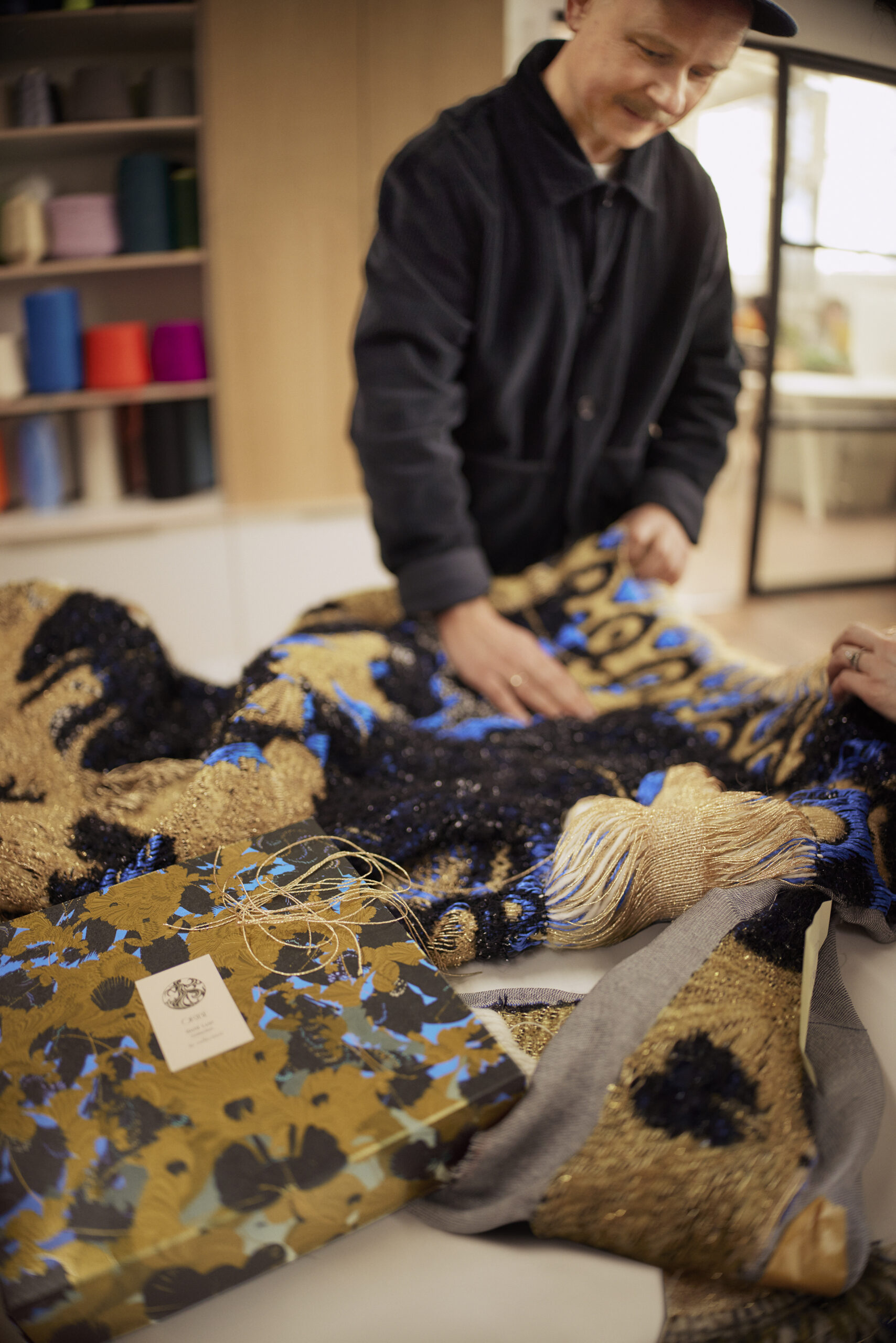
“I try to enjoy the ride,” says artist Kustaa Saksi of the visual auras, brought on by debilitating migraines, that inspire the mesmerizing shapes and psychedelic hues of his tapestries.
Woven on looms at the TextielMuseum’s TextielLab in Tilburg—a former blanket factory turned experimental weaving hub—Saksi’s textiles are dreamscapes of floating threads and dense layers, with luminescent bio-forms that mesmerize and intricate patterns that disorient. His latest piece, Golden Threads, is an abstract ode to the Norse goddess Sif, famed for her golden hair. Saksi created the tapestry—which took six months and more than 180 pounds of thread—in partnership with Oribe as part of its annual artist program, now in its eighth year, which invites creatives to reinterpret Oribe’s visual language for limited-edition holiday packaging. (Past participants include Kenyan photographer Thandiwe Muriu, Japanese digital painter Kohei Kyomori, and American Indigenous clay artist Rowan Harrison.)

“We consider it a collaboration, not a commission. We learn about the nuances of their world—paper, textures, saturation, technique, endpoints, engineering—everything that the artist incorporates into their work,” says Daniel Kaner, co-founder and president of Oribe. For Kaner, these collaborations carry forward co-founder Oribe Canales’s vision of beauty as art. “Oribe always referred to himself as an artist. Yes, he was a hairdresser, but he considered himself a creator first,” Kaner says. “Oribe [as a brand] has become so much more than just shampoo. It’s become an art project.”
Kaner sends his team to art shows around the world and encourages visits to museums and galleries during work hours. “We create opportunities for people to go out into the art world—we’re not just sitting behind a desk searching artists online,” says Jennifer Smith, vice president of product creation at Oribe. “We became obsessed with Kustaa Saksi’s work. Our team thought he had embodied the mastery of traditional craft with a signature storytelling aesthetic that embraced ideas of nature.”
Here, Saksi shares his inspirations, his process, and how hair, hallucinations, and history became woven into Oribe’s 2025 holiday collection.
Why did you say yes to Oribe?
There’s such a high level to what they do. The love for craftsmanship and the understanding of quality and texture—there are so many similarities between what we do, that it was easy to say yes.
Your work is known for its hallucinatory jubilance, but also is so grounded in nature. Where do you find inspiration?
I’m really interested in the textures and patterns that we see in our everyday lives — on the street or in a forest. It’s a mishmash of sources of inspiration that come together, and then I convert it to my own visual language at the end… I’ve suffered from migraines all my life. But the migraine attacks have always been so visual for me, that at one point I started to enjoy it in a way. And, actually, lately, my headaches aren’t so bad anymore, but I still get the visual show.
What do you see?
It’s always different. It’s never the same. There might be a few continuous elements, but each time it’s a different show. I sometimes try to sketch the images that I see on a paper so I can remember afterwards, because after the attack it might be a couple of days before I can work again.

Should your pieces be touched? I want to curl up in them.
The museums always put signs up saying not to touch, but people still touch them. It’s been almost impossible to prevent it, that drive to touch. The softness of the material, you want to put your hands on it.

Where did your mind go when you first started planning your Oribe work?
My main inspiration was that floating feel of hair—that’s what I wanted to emphasize in this work. I wanted to capture that feeling of movement. So in the piece, most of the yarn is floating free—it’s not flat. You can see the yarn, see how it lifts. The piece is based on a mythology of Sif and her golden hair. She’s the wife of Thor in Norse mythology. The trickster god Loki was so jealous of her hair that he stole it one night. Thor was really angry and forced Loki to weave this amazing wig of golden hair, which was even more beautiful than the original hair of Sif. The story is quite sad, but I wanted to depict it.
That’s the gold we see!
I’ve been using quite a bit of golden yarn in my work. Somehow when I’m mixing materials, natural with metallics, it brings something new out of it. Combining a very natural material with a high-tech material creates something very nice. I have the urge to push the boundaries of weaving every time, and I’m glad that I can work at the TextielLab. There are commercial mills that just all do the same things, but here I can experiment.
What artists do you find inspiring?
I live right next to the Rijksmuseum in Amsterdam, so I go there quite often to see the works of the Impressionists. I like how they mix colors. I use the same concepts in my work: I don’t actually mix the yarns—rather, the viewer mixes the colors in their head. And also there’s a link to Surrealism. There’s always a surreal approach to my work. I give hints to the viewer, but the viewer needs to do some work.
How do you incorporate innovation—whether a new technique or fiber—into your pieces without having that innovation become the focus of the piece?
I always try to push the boundaries of weaving, but not go overboard. There’s a challenge there. I think we inspire each other here—the artists and the staff at the TextielMuseum. They might have figured out a new way of weaving or a new material, and I get inspired and use it right away. There’s this fine line between overdoing things and keeping the story alive, which is the most important thing when you are creating. It has to be crystal clear, the message of it.
Shop the Oribe holiday collection with limited-edition packacing by Kustaa Saksi: HERE.










 in your life?
in your life?

